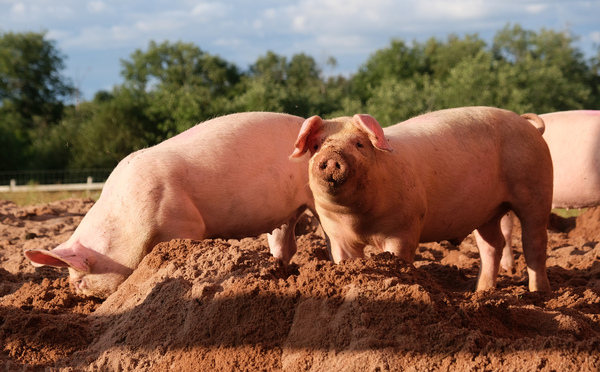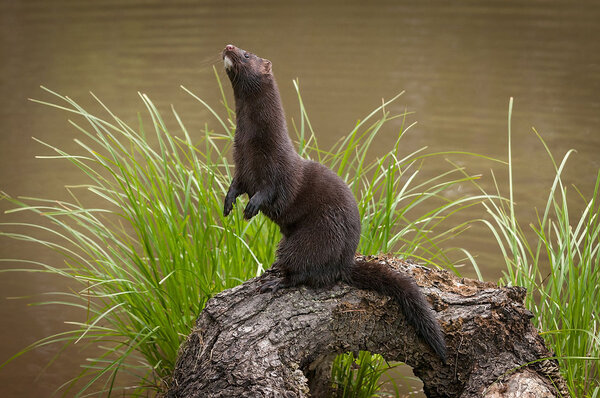The animal world is full of surprises, and one common curiosity that often sparks interest is the question, “What animal can’t look up?” The answer to this quirky question is pigs! It’s an intriguing fact that pigs, despite their intelligence and adaptability, have a unique physical limitation: they are unable to lift their heads and look directly upwards.
In this article, we’ll dive deep into the anatomical reasons why pigs can’t look up, explore some common myths around this fact, and take a broader look at pigs’ behavior and physical characteristics. By the end, you'll have a better understanding of these fascinating creatures and the reasons behind their peculiar restriction.
The main reason pigs can’t look up has to do with their anatomy, specifically the structure of their necks and spinal vertebrae. Pigs have relatively short, muscular necks designed to support their heads for rooting and foraging activities on the ground, rather than for looking upwards.
Here’s a breakdown of the key factors:
Limited Neck Mobility: Pigs have stiff neck muscles and a compact spinal structure that limit the upward movement of their heads. While they can move their heads from side to side and look downwards with ease, tilting their heads back to gaze at the sky is a challenge.
Snout-First Design: Pigs are natural foragers, meaning their anatomy is optimized for snuffling and rooting in the soil with their snouts. Their low-slung heads, along with powerful snouts, help them dig for food like roots, insects, and other ground-level treats. This evolutionary adaptation reduces the need for pigs to look upwards.
Field of Vision: Pigs also have eyes positioned on the sides of their heads, giving them a wide field of view. While this helps them detect predators or food at ground level, it further limits their ability to see directly above.
Despite this limitation, pigs can still look at higher objects in certain ways. They can slightly raise their heads or tilt them, though not enough to look straight up at the sky. This anatomical quirk is one of the many factors that make pigs such unique creatures.

A common myth is that pigs never get to see the sky. While it’s true that pigs can’t easily look straight up, they aren’t completely deprived of seeing the sky. Pigs can roll onto their sides or backs when they’re resting or playing, which allows them to get a glimpse of the world above. So, while they can’t actively lift their heads to look up like humans or some other animals, they’re not entirely incapable of seeing what’s going on above them.
While pigs’ inability to look up is an interesting fact, there are many more fascinating aspects to their behavior and physicality:
Highly Intelligent Animals: Pigs are known for their intelligence and are often ranked among the smartest animals in the world. They can learn complex tasks, recognize their names, and even play video games! Their cognitive abilities make them excellent problem-solvers.
Exceptional Sense of Smell: One of the reasons pigs don’t need to look up is their incredible sense of smell. Pigs have highly developed olfactory receptors, making their sense of smell more sensitive than that of dogs. This ability allows them to sniff out food buried deep in the ground, which is far more important for their survival than being able to look upwards.
Social Creatures: Pigs are highly social and enjoy interacting with each other and humans. They form close bonds with their herd members and can often be seen engaging in playful behavior, despite their hefty size.
Great Swimmers: Despite their stocky bodies, pigs are surprisingly good swimmers. There are even stories of wild pigs swimming between islands in search of food.
Pigs and Mud: Pigs famously roll around in mud, but it’s not because they’re dirty. Pigs use mud to cool down since they lack sweat glands. Mud also protects them from sunburn and insect bites, acting as a natural sunscreen and bug repellent.
While pigs are one of the most famous animals associated with the inability to look up, they aren’t the only ones with limited neck mobility. Other animals also have physical restrictions that limit their upward vision:
Elephants: Due to their large heads and heavy trunks, elephants can’t easily lift their heads to look up. However, they can raise their trunks to investigate the space above them.
Rabbits: Rabbits have limited neck mobility, meaning they can't look directly upwards without moving their entire bodies. Their large eyes and side-facing vision help compensate for this.
Cows: Like pigs, cows have limited neck mobility and are more adapted to grazing with their heads down. However, they can tilt their heads upwards slightly more than pigs.
The fact that pigs can’t look up may seem like a quirky piece of trivia, but it highlights the fascinating adaptations that different animals develop to suit their environments. Pigs, with their strong snouts, powerful sense of smell, and ground-level focus, don’t need to look up to thrive.
Though pigs are physically limited in this regard, their other impressive traits — including their intelligence, social behaviors, and keen sense of smell — make them truly remarkable creatures. So, the next time you think of pigs, remember that while they may not be able to gaze at the stars, they’re still one of the most intriguing animals on Earth.
animal tags: Pigs
you may also like

Horses are ancient and beloved animals that play important roles in agriculture, warfare, transportation, and leisure activities. However, horses are considered protected animals in some cases, but this depends mainly on their species and geographical location. In many countries, ce...

Geese are birds, and they are a member of the Ansalis family. Wild geese are usually classified as a member of the order Anseriformes. Anseriformes are a group of large water birds, including ducks, geese, and swans. Wild geese usually inhabit water and swamp areas. They are migrato...

Pigs exhibit relatively low levels of intelligence in some aspects, but this does not mean that they are "dumb" animals. Research shows that pigs have excellent memory and cognitive abilities and can learn a variety of tasks and skills. For example, many pigs can learn complex movements such as b...

Minks are small, semi-aquatic mammals that belong to the weasel family, Mustelidae. There are two main species: the American mink (Neovison vison) and the European mink (Mustela lutreola). These animals are known for their luxurious fur, which has historically made them a target for the fur industry...

"Flying snake disease" is actually a relatively common insect-borne disease, which is caused by a parasite called "Flying snake disease". The intermediate hosts of this parasite are reptiles such as tree frogs and flying snakes that are widely distributed in tropical and subtropical regions....

In myths, legends and literature from around the world, dragons are often described as mythical creatures with powerful abilities. It should be noted that the descriptions and characteristics of dragons vary greatly in different cultures. For example, dragons in Eastern culture are very different fr...

To observe a cat’s potential personality, you can pay attention to the following aspects: 1. Behavior: Observe the cat’s daily behavior, including activity level, curiosity, desire to explore, and whether it likes to interact with people. Some cats may be more active an...

The flamingo is a unique and striking bird. Here are some of its characteristics:Unique appearance: The flamingo usually has pink feathers, which is one of its most distinctive features. This pink feathering is caused by a rich supply of carotenoids, and when they eat food containing carotenoids, th...
Email: jsset668#gmail.com (change # to @) Please indicate your purpose of visit! Guangdong ICP No. 2022053326 XML| map| Chinese

